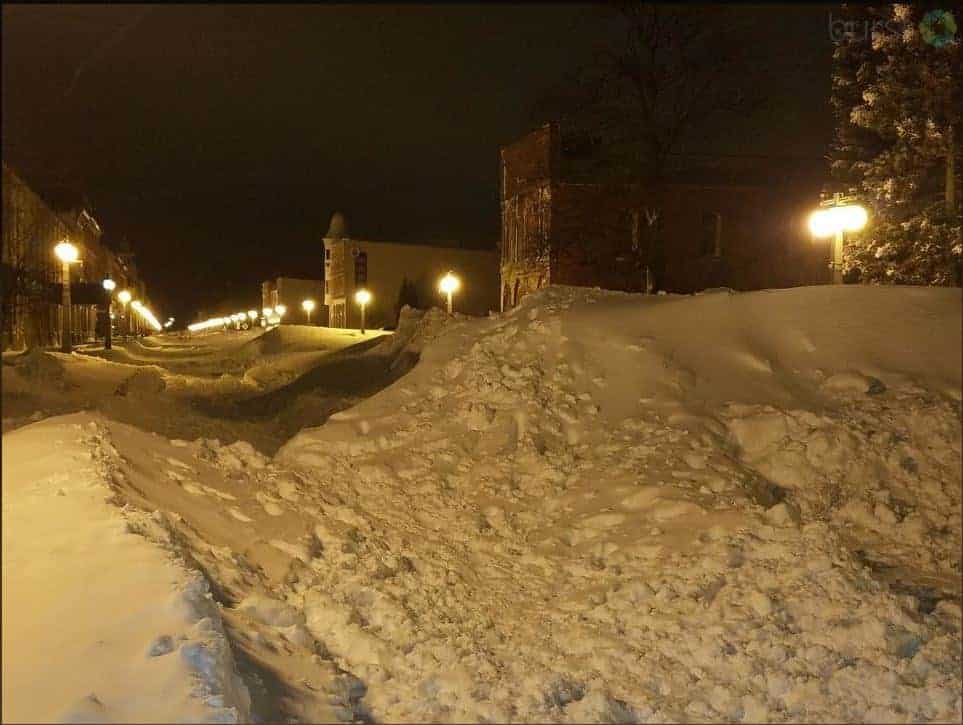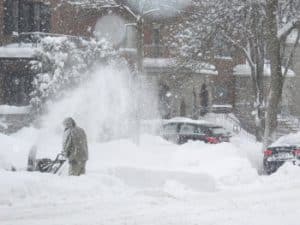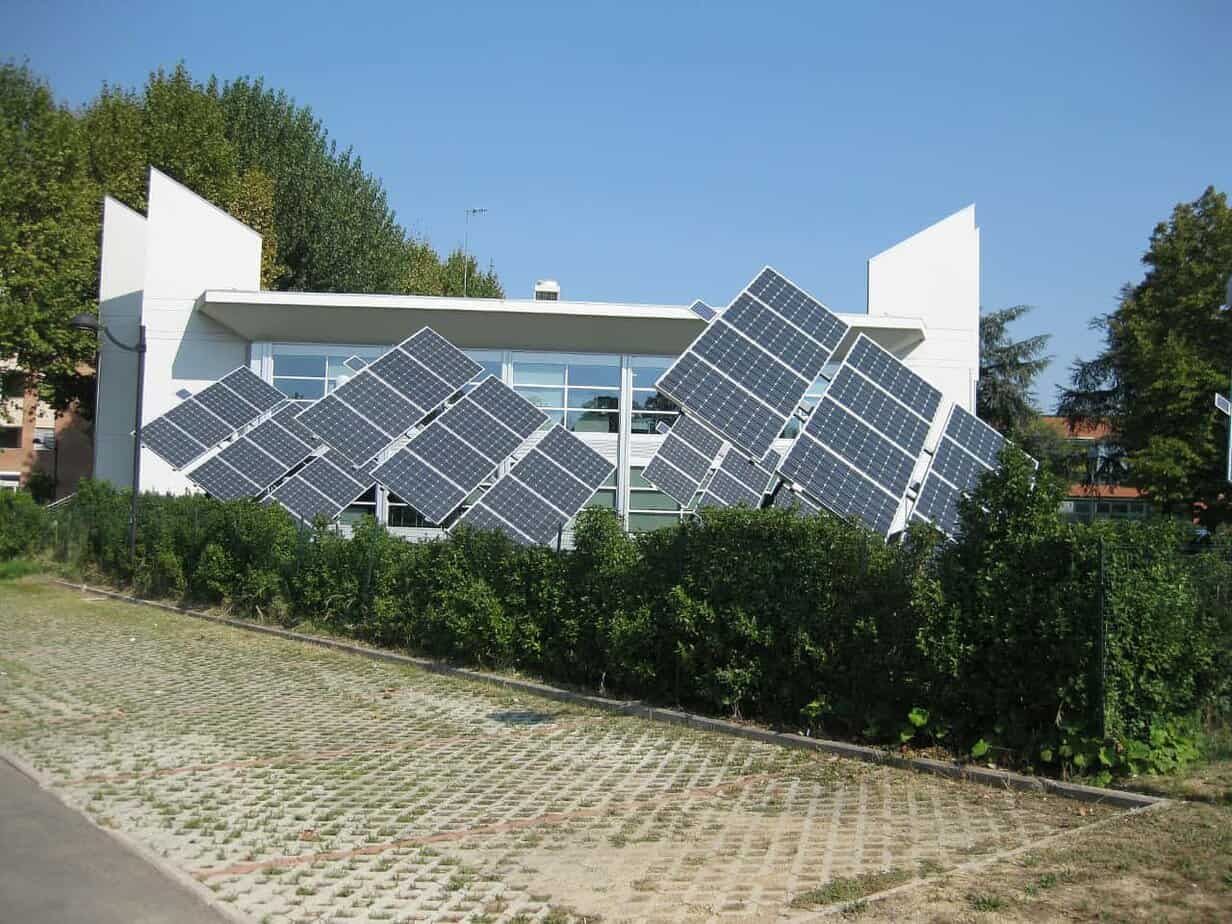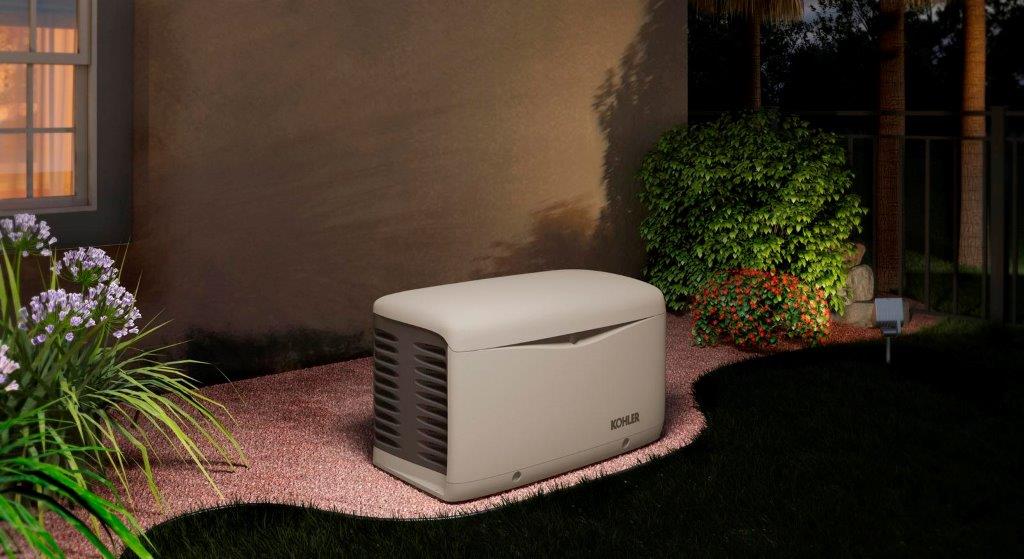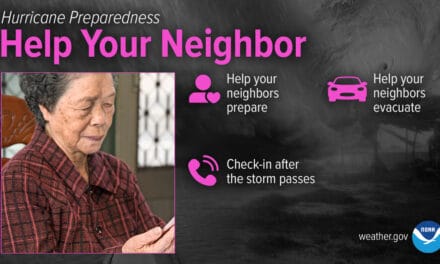Blizzard Sets Records – Closes Churches, Roads, and Shuts Down Power
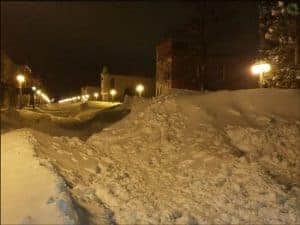
An eerie scene on 1st Street greeted residents early Monday Morning with drifts piled high along the impassable road. Photo courtesy of Lori Scaggs, Menominee, MI.
Grow up in anywhere across Northern Wisconsin, and frequent snowstorms are a fact of life. It could start in early October and not stop until May. On April 30, 1960, six-inches of snow fell and blanketed the north-central portion of the state. I happen to know that because my parents were married on that day. They pinned dry cleaner bags to my mother’s wedding dress to keep it out of the snow. Someone should have taken pictures.
Hurley Wisconsin receives about 170 inches of snow in the average year. That’s a little more than 14 feet, in case you were wondering. Just 20 miles east and slightly south, the border between Wisconsin and Michigan sits in the Lake Superior Snow Belt which sometimes adds several more feet to the annual total.
By the second weekend of April, folks from Minnesota, Wisconsin, and the Michigan’s Upper Peninsula know they can expect flurries and possibly even accumulation, but usually, the big snow is over for the season except on rare occasions like my parent’s wedding day.
Big snow can come early too. On November 30, 1985, two weather systems collided over Wisconsin. By December 2, up to 26 inches of snow had fallen near the Wisconsin-Michigan border. Snow in late November is fairly common up north, but when it’s measured in feet, it becomes a part of local lore.
This year, the National Weather Service began to issue watches and warnings for April 13 this year. And as the snow began to arrive, snow blowers not yet put away were called into service. Snow plow crews started early and finished late.
But it wasn’t enough. The winter storm turned into a full-blown blizzard, and it became impossible to keep the roads clear. Visibility sometimes fell to less than 100 feet in complete whiteout conditions.
On April 13, no one, not even the National Weather Service, expected two feet or more of snow. Friday night turned into Saturday. Saturday continued without letup, and more warnings were issued for Sunday. The wind blew snow into drifts five, eight, sometimes 10 feet high. As far south as Illinois, 50-mile per hour winds with higher gusts blew down tree branches. Driving rain pushed rivers into flood stage. In Oshkosh, freezing rain brought down power lines and left hundreds without power.
The snow was wet and heavy and hard to move. Not the kind of snow that you want to shovel. It was the thick, snow-blower-choking stuff that people will talk about for a long time. Someone nicknamed the storm Blizzard Evelyn. In Green Bay, it piled up 25-inches-deep. Fifty miles north in Marinette Wisconsin and across the river in Menominee Michigan, the snow totals for all three days exceeded two feet by Monday morning and left a surreal landscape more familiar to the Dakotas or perhaps a mountain pass.
Best Home Backup Generators for Cold Climates
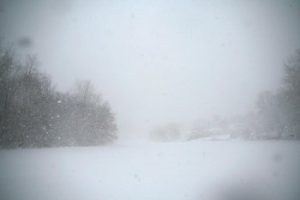
The horizon nearly disappears in near blizzard conditions. In a true blizzard like Evelyn, the trees and other features disappear and it becomes impossible to discern the difference between the ground and the sky.
My dad, who lives in Marinette, Wisconsin didn’t answer my call on Saturday night. I was a little worried. He’s 84, very active, and gets around well. A little snow isn’t going to keep him from going anywhere. I found out on Sunday that he spent the night in the basement of his church. Before his group broke up for the evening, the local police chief stopped by and warned everyone about the weather. When Dad went outside and saw the snow, he took his sleeping bag from the back of the van—he knows all about Winter Preparedness—and went back inside. Everyone in the church group stayed overnight. I can’t ever remember churches closing on a Sunday, but many did.
Dad made it home Sunday afternoon, but the snow was still piling up.
Overnight in a church basement is probably more comfortable than stranded in an airport. Blizzard Evelyn caused flight delays and cancellations. Green Bay’s Austin Straubel Airport closed because crews couldn’t keep up. Further south in Appleton, they managed to keep the runway open, but only by working nonstop.
Buyer Guide – What Size Backup Generator Do I Need
The snow finally stopped on Sunday night. Road crews began busting open drifts and clearing the Interstates, state highways, and local roads. The northern half of the state was at a virtual standstill on Monday. Perhaps the worst of the blizzard affected farmers. Numerous barn roofs collapsed under the weight of the snow. Four people were trapped in one dairy barn for hours until rescuers were able to reach them. The roof over the swimming pool collapsed at a hotel in Brown County.
For certain, the folks in Northern Wisconsin won’t forget this storm for a long time. And that comes as no surprise. NWS Meteorologist Roy Eckberg in Green Bay called the storm a once-in-a-lifetime event. He’s probably right. In 84 years, my dad has never seen an April storm that compared to Blizzard Evelyn. Not in April.

